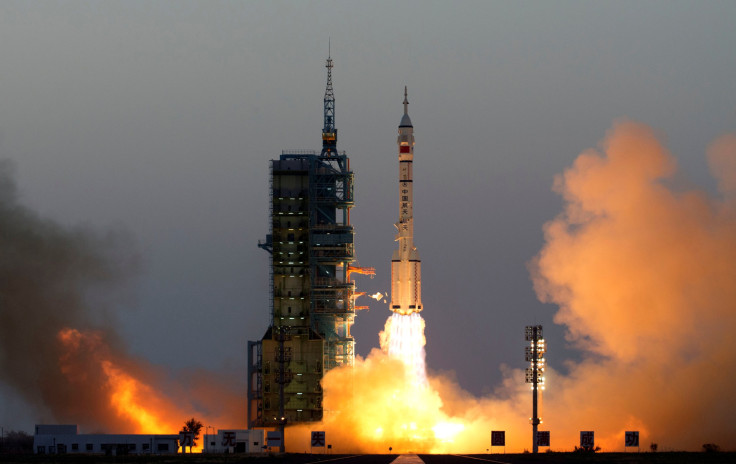China’s Manned Space Mission: Shenzhou-11 Docks With Tiangong-2 Space Lab

Shenzhou-11 — a Chinese spacecraft carrying two astronauts — successfully docked with the uncrewed Tiangong-2 space lab on Tuesday. The astronauts, Jing Haipeng and Chen Dong, have entered the space lab, where they would spend the next 30 days conducting experiments and assessing the complex’s habitability.
The docking, broadcast live by state television, took place roughly 244 miles above Earth, after which the Chinese astronauts, or taikonauts, had to maneuver through a narrow passage less than a meter wide to enter the space lab.
Saying hello from "highest" spot above #Earth. 2 astronauts send greetings from #Tiangong2, after entering it from #Shenzhou11 pic.twitter.com/WCSmxxAzx2
— China Xinhua News (@XHNews) October 19, 2016
“The door of Tiangong is a little bit troublesome,” Liu Ning, an expert at the China Aerospace Science and Technology Corporation — one of the main contractors for the country’s space program — told CCTV. “The astronaut needs to lie down their body in the passage to open the door horizontally. The passage is about 1 meter long and about 0.8 meters wide. It is a tube-like passage. The astronaut needs to go through it horizontally and then raise head to open the door.”
Since it sent its first satellite into orbit in 1970, China has been pumping large amounts of cash into its space program. It sent its first astronaut into space in 2003, and in 2011, it launched Tiangong-1 — the first operational component of the Tiangong program, which seeks to put a permanently manned space station into service by 2022.
The second component, Tiangong-2, was launched in September.
The Shenzhou-11— China’s sixth manned crewed mission — will be the longest space mission by Chinese astronauts.
The country’s space ambitions extend far beyond sending astronauts to low-Earth orbits. In 2013, as part of its lunar exploration program, China launched the Jade Rabbit — its first lunar probe. By 2018, China aims to land its Chang'e-4 probe on the far side of the moon, and by 2020, it plans to send an unmanned rover to Mars.
© Copyright IBTimes 2024. All rights reserved.






















